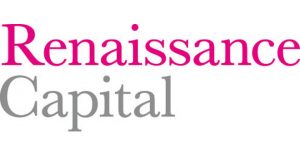 Renaissance Capital, a leading emerging and frontier markets investment bank has hinted that the recent gains made by the Ghanaian cedi (GHS) against the US dollar will not last long.
Renaissance Capital, a leading emerging and frontier markets investment bank has hinted that the recent gains made by the Ghanaian cedi (GHS) against the US dollar will not last long.
According to the bank’s recent analysis of eight currencies in Sub-Sahara African (SSA), it maintained that the dollar is likely to strengthen further from current levels, particularly when US rate hikes begin.
This implies the undervalued currencies like the GHS and Tanzanian Shilling (TZS) may remain so for long, that is, their retracement/recovery is likely to be delayed, the bank’s July Economic Research Outlook on SSA explained.
Renaissance Capital’s Sub-Saharan Africa (SSA) Economist, Yvonne Mhango stated: “Our analysis suggests that the Ghanaian cedi (GHS) and the Tanzanian Shilling (TZS) depreciation, in the year to May, was overdone. We came to this conclusion because both currencies are undervalued and their respective depreciations exceeded that of the EUR/$1.
For these reasons, we think there is upside risk for both the GHS and TZS. By that, we mean we could see the two currencies retrace (strengthen) from present levels. We believe it is because the GHS is undervalued that we saw its swift appreciation, following positive news from the IMF on 30 June, on the country’s fiscal performance”.
As of Monday, the cedi traded at GHS3.33 against the dollar, which is a continuation of its more than a week run. This year, the cedi has depreciated 26 percent in value against the dollar. Some forex bureau operators in Accra attributed the sharp decline of the dollar and other major trading currencies to speculation in the market.
The cedi, like other currencies in the region, have in recent months come under significant pressure. Of eight SSA currencies the Renaissance Capital analysed, it found the Kenyan Shilling (KES) to be especially vulnerable (as it is an overvalued currency that depreciated by less than the EUR/$), Madam Mhango noted.
She argued that macro imbalances and dollar strength place overvalued currencies at risk of sizeable depreciations, and imply the undervalued Ghanaian cedi and Tanzanian shilling may remain so, for longer, according to the bank’s outlook in the possession of the publication.
It observed that Nigeria’s limited policy space, implies the naira should weaken more than the Kenyan shilling.
The Nigerian naira (NGN) is 20% overvalued but because its depreciation was in line with the EUR/$1 depreciation, it is less vulnerable than the KES, by the RenCap parameters.
But given that Nigeria’s monetary policy is already exceptionally tight and fiscal policy is contractionary, Madam Mhango sees little scope for further policy tightening to defend the NGN.
Plugging of leakages may be improving foreign reserves ($31.9bn) on 7 July, according to the Central Bank of Nigeria.
But as long as the price of the biggest source of foreign inflows, oil exports, remains low, she said the bank was reluctant to attach any significance to this, plus reports of pent up foreign demand ($4bn is one estimate from discussions with local banks) implies liquid foreign reserves are lower than the official number.
“This is why we see the NGN depreciating by c. 18% to NGN235/$1 (vs 7% for KES) over the next six-to-12 months”.
Furthermore, the research of the bank found the Kenyan shilling (KES) to be one of the most vulnerable to a significant depreciation. This is because it is overvalued (given the deviation of its real effective exchange rate (REER) from the 10-year average) and its depreciation was smaller than the EUR/$ depreciation.
The KES vulnerability explains the 300-basis points rate hike in recent weeks, by Kenya’s central bank. We believe policy tightening will slow the KES depreciation, but it will not halt it because weak exports, growing imports and a slowdown in financial inflows will weigh on the currency; as will US rate hikes that are due in the short term, she added.
Madam Mhango stressed that their Kenya REER suggests that the KES is 20% overvalued, saying “We believe ongoing monetary tightening will keep the KES from hitting 120/$1. We thus revise our year-ending 15 shilling forecast to KES109/$1 vs KES100.7/$1 previously”.
The RenCap analysis revealed that the Zambian Kwacha (ZMW) was fairly valued in May, and that it depreciated by less than the EUR/$1 depreciation. The 7% depreciation of the ZMW since May implies that the Zambian currency may now be a little undervalued.
Zambia’s sizeable fiscal imbalance (8% of GDP, according to the IMF) places the ZMW is at risk of a significant depreciation, like Ghana. This means, like the GHS, the ZMW is likely to become significantly undervalued.
Of the East African Community’s three biggest economies, Uganda’s currency is the most likely to revert to its ‘fair value’, when the RenCap compared its REER to that of Kenya and Tanzania.
The bank’s analysis shows that the Ugandan shilling (UGX) was fairly valued and had depreciated by a little more than the EUR/$ depreciation in May (the end of our REER analysis period).
However, the UGX has since depreciated by 17% against the dollar, which leads us to believe the UGX is now undervalued. Uganda’s central bank has called for a monetary policy committee meeting one month earlier than expected, for the week of 13 July.
The bank expects the central bank to further tighten monetary policy in defence of the UGX. Once the dollar stabilises, it expects the UGX to be one of the first of SSA’s undervalued currencies to retrace and move back towards its ‘fair value’.
African Eye News.com



